Excerpts from Jim Conrad's
Naturalist Newsletter
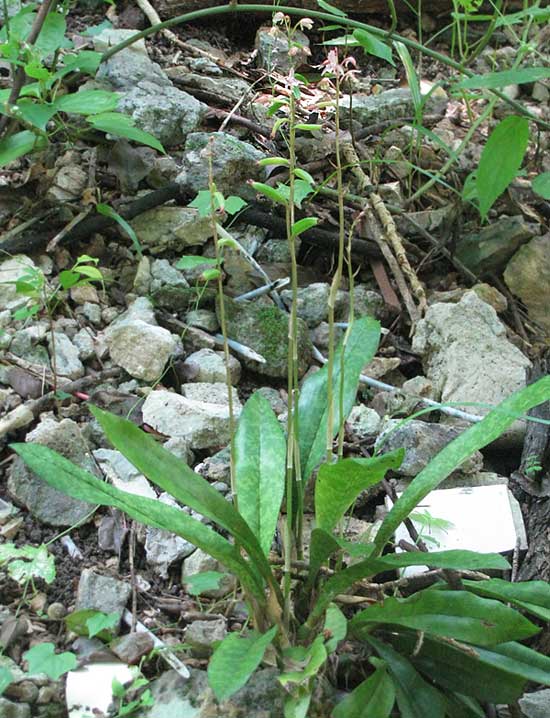
from the October 10, 2010 Newsletter issued from Hacienda Chichen Resort beside Chichén Itzá Ruins, central Yucatán, MÉXICO; limestone bedrock, elevation ~39m (~128ft), ~N20.676°, ~W88.569°
ORCHID MYSTERY RESOLVED
Orchids are frequently seen here, the vast majority growing on trees as epiphytes. There's one very common terrestrial species, however, that for nearly a year has resisted my efforts to identify it -- until now. I've even listed every orchid I could find listed for the Yucatán -- there's quite a number of them -- and Googled them. Our terrestrial species so common here simply wasn't on any list. It was a mystery. You can see a flowering one on a cenote wall near the hut above.
Note its mottled leaves. A close-up of a flower, about half an inch across (13 mm), is shown below:
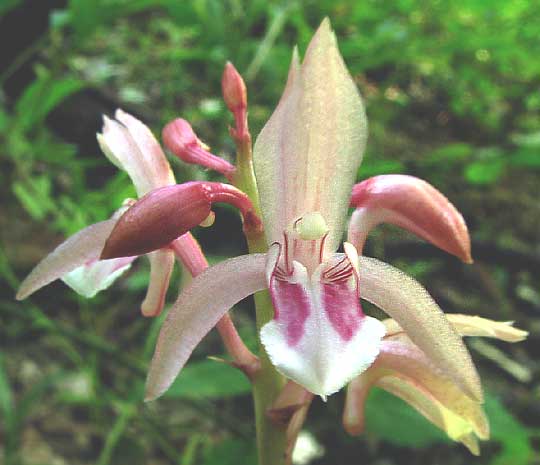
Its characteristically nodding fruits are shown below:
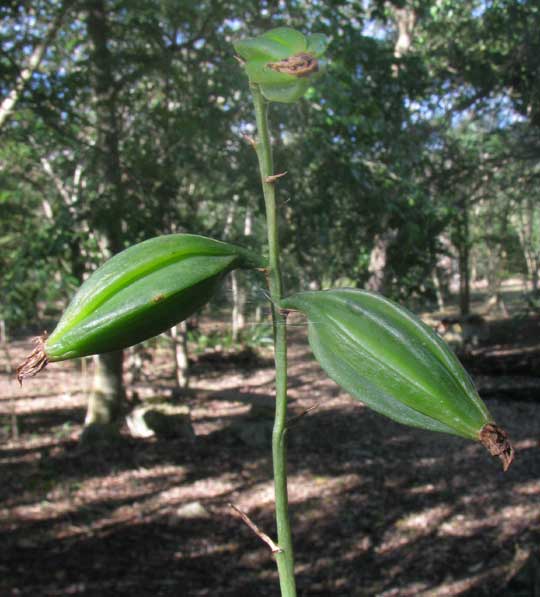
Its pseudobulbs -- those water-storage growths at the bottom of leaves of many orchid genera -- are shown below:
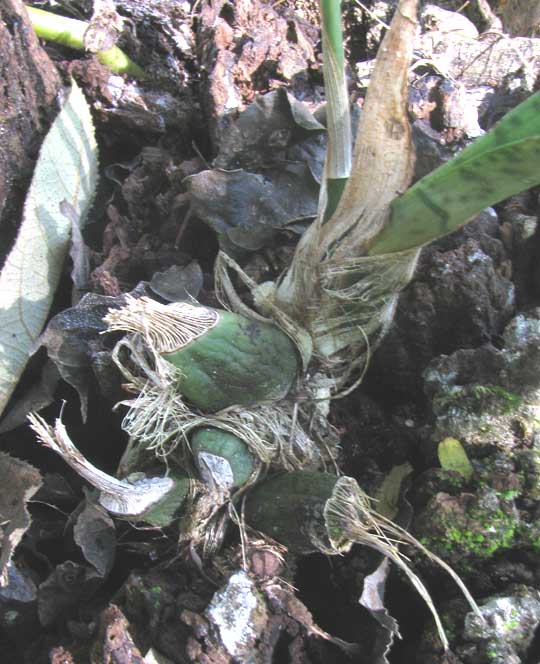
A peculiarity of the pseudobulbs is that prickly spines arise from the bulbs' tops. This, along with its terrestrial mode and mottled leaves, should have made this orchid very easy to identify, but that wasn't the case.
Yesterday, in desperation, I tried a very different, non-technical approach. I Googled the keywords "orchid chichen itza" and by golly there it was the first thing! Turns out that an orchid collector had illegally robbed one from a ruin here at Chichén Itzá, taken it home, and after months finally was able to identify it.
It's OECEOCLADES MACULATA, apparently without a commonly used English name, and the reason it's been hard to identify is that it's a "weed" introduced from tropical Africa. Currently it's spreading fast in the Caribbean area, here and there in Central and South America, in the Yucatán, and even in the US. It was discovered in the Miami area in 1974 and is enlarging its area of distribution fast.
We think of orchids as being extremely fussy about their ecological requirements, and usually needing fairly undisturbed habitats. But this is one species that prefers disturbed places, and occupies many habitats from rainforests in the Caribbean to various "old growth" types, to our own somewhat disrupted, scrubby woods. It roots in various soil types, but -- despite the one in the picture occupying a slope -- strongly prefers level terrain.
So, this has been a hard-won ID, but it's one worth waiting for. An African weed-orchid not on any list I can find for this area. You just never know what you'll blunder into.
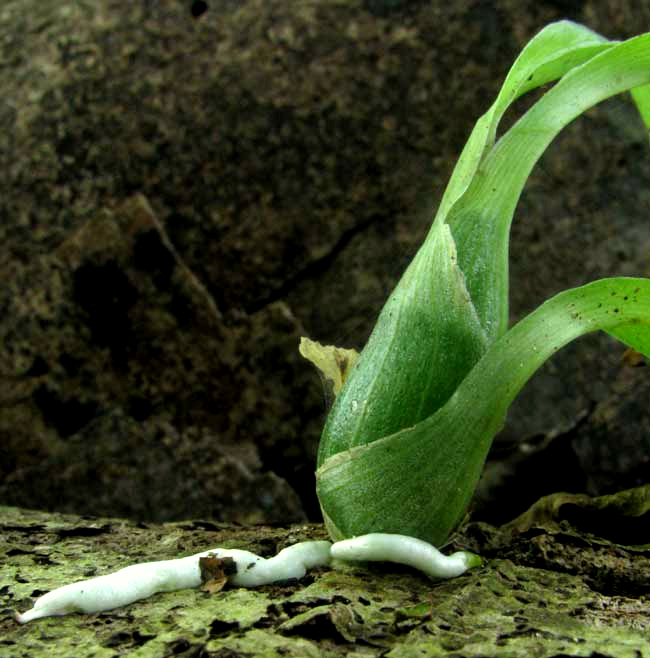
adapted from the January 15, 2012 Newsletter issued from Hacienda Chichen Resort beside Chichén Itzá Ruins; limestone bedrock; elevation ~39m (~128ft), N20.675°, W88.569°; central Yucatán state, MÉXICO
WHITE ROOTS ON EPIPHYTIC ORCHIDS
Maybe you've noticed that epiphytic orchids -- those growing on trees -- produce very thick, white roots like those shown above. Those white roots help distinguish orchids from other epiphytic plant types, such as bromeliads. But, why are such roots so thick and white?
At first I imagined that the white covering was composed of mycorrhiza. Mycorrhizae are fungi living symbiotically on and in plant roots. They improve a root's carbohydrate storage capacity, help the roots absorb more mineral nutrients and transport water, and other things. However, there are two kinds of mycorrhiza: ectomycorrhizae, which form an exterior sheath on roots, and; endomycorrhizae, which live deep inside the roots. And I read that orchids have endomycorrhizae. Our orchid's white root covering is not an ectomycorrhiza.
Finally it occurred to me that often these white roots are seen dangling freely in the air or even standing up as somehow rooting in the air. Googling the topic of orchid absorption of water from the air, eventually I learned that the white, spongy, water-absorbing material covering epiphytic orchid roots (sometimes it can be silvery or brownish) is called "velamen." Anatomically velamen can be thought of as a root's much modified, spongy epidermis. Its main purpose is to wick water from the air, but also it serves as insulation for the roots. Velamen has a layer of thick-walled cells that keeps water from escaping as well as occasional thin-walled cells that allow water from outside to pass toward the root's conducting tissue.
Velamen-covered roots can function as ordinary roots, too, developing root hairs and absorbing nutrients from the host-tree bark it touches. The nutrients it absorbs on the orchid's arboreal perches derive from dead tree-bark, dissolved dust particles, bird droppings and the like.